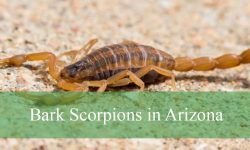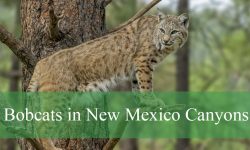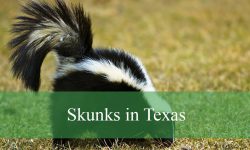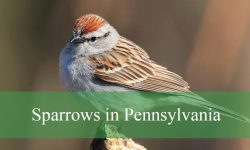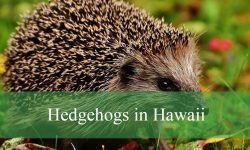Colorado is home to a fascinating variety of wildlife, including several species of grouse that thrive across its diverse landscapes. Grouse are medium to large ground-dwelling birds known for their cryptic plumage, unique behaviors, and interesting mating displays. If you’re a birdwatcher, hunter, or nature enthusiast in Colorado, knowing the different types of grouse in the state can enhance your outdoor experience.
This comprehensive guide explores the four main grouse species found in Colorado: Greater Sage-Grouse, Dusky Grouse, Sharp-tailed Grouse, and Ruffed Grouse. We’ll cover their key identification features, habitats, behaviors, and fun facts. Along the way, you’ll also find tips on where and when to spot these birds.
Why Grouse Are Important in Colorado’s Ecosystems
Before diving into species details, it’s helpful to understand the ecological role of grouse in Colorado. These birds serve as indicators of healthy habitats like sagebrush steppe and mountain forests. Grouse help control insect populations and disperse seeds, contributing to plant diversity. They are also prey for many predators, making them integral parts of the food chain.
Grouse are popular among hunters and birders alike, making their conservation a priority. Habitat loss from development, energy extraction, and climate change poses challenges, so learning about them supports awareness and preservation efforts.
How to Identify Grouse: Key Features to Look For
Grouse species in Colorado can appear quite similar at first glance, but careful observation reveals notable differences in their size, plumage patterns, behaviors, and preferred habitats. They range from medium to large birds, measuring roughly 15 to 30 inches in length. Their feathers are typically mottled in shades of brown, gray, and white, a combination that provides excellent camouflage in natural surroundings.
Tail shapes can be a helpful clue, as the Sharp-tailed Grouse features pointed tail feathers while the Ruffed Grouse displays a broad, fan-shaped tail marked with bold black bands. Behavior also plays a role in identification, with some species known for elaborate mating displays, distinctive drumming sounds, or courtship dances. Even the location where a bird is spotted offers valuable hints, whether it is the open sagebrush plains, dense mountain forests, or wide grasslands.
Different Types of Grouse Found in Colorado
Greater Sage-Grouse
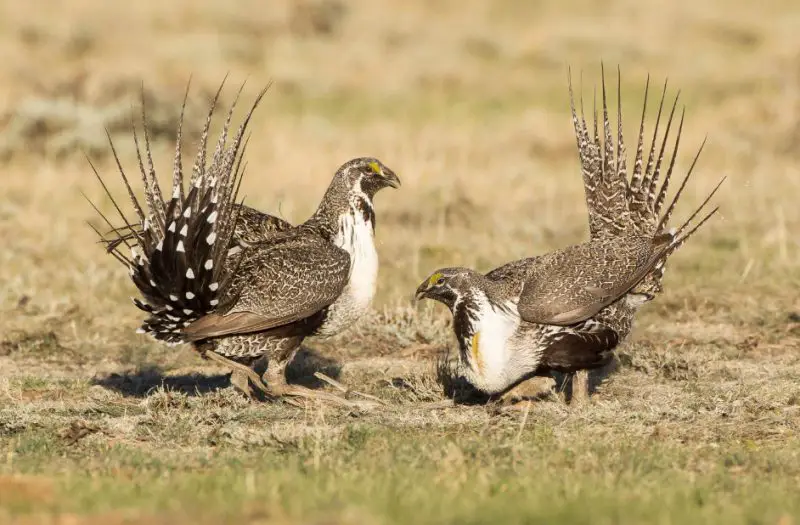
The Greater Sage-Grouse is the largest grouse species in North America and is easily recognized by its impressive size and unique breeding displays. Adult males can reach up to 30 inches in length with a wingspan of about 27-30 inches. Their plumage is mottled gray, brown, and white, providing excellent camouflage among sagebrush landscapes. During the breeding season, males inflate large yellow air sacs on their chests and fan out spiky tail feathers to attract females.
In Colorado, Greater Sage-Grouse inhabit the sagebrush steppe regions primarily in the eastern and southeastern parts of the state. These birds rely heavily on vast expanses of sagebrush for food, shelter, and nesting. Their diet mainly consists of sagebrush leaves, buds, and insects, especially during the breeding season when protein intake is crucial. They tend to gather in communal breeding grounds called leks, where males perform elaborate strutting dances to woo females.
Behaviorally, Greater Sage-Grouse are ground dwellers and spend most of their time walking or running rather than flying. They are most active during early morning and late evening, with their mating displays occurring at dawn. Outside of breeding season, they tend to form small flocks for foraging and protection. Despite their adaptability, they are sensitive to habitat disturbance, making conservation efforts critical.
A fun fact about Greater Sage-Grouse is that their unique mating dance is one of the most spectacular bird courtship rituals in North America. The booming sound made by inflating their chest sacs can be heard from up to half a mile away. This bird is often called the “sagebrush chicken” due to its habitat and appearance.
Dusky Grouse
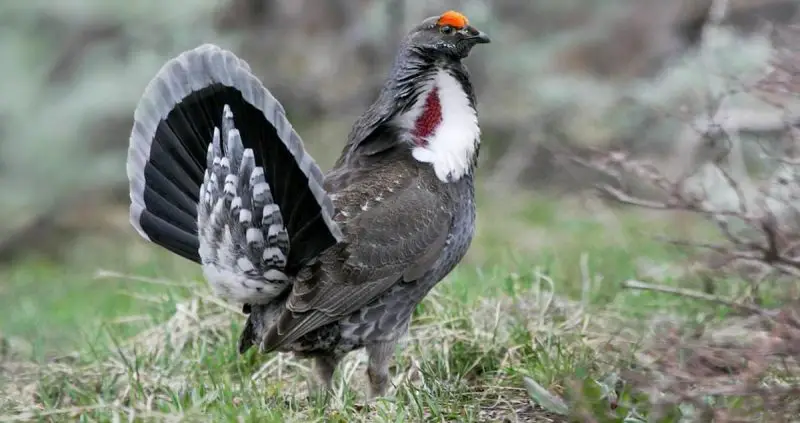
Dusky Grouse are medium-sized forest grouse that prefer mountainous regions with dense coniferous forests. Adult males typically measure around 17-20 inches in length with a wingspan of approximately 28-30 inches. They have dark gray to brown plumage with a distinctive bluish-gray head and neck. Males also develop a bright yellow patch over each eye during the breeding season, which is a key identification marker.
In Colorado, Dusky Grouse are commonly found in the higher elevations of the Rocky Mountains, especially in spruce-fir and lodgepole pine forests. They are well-adapted to cold climates and steep terrain, often roosting in dense trees for protection from predators and harsh weather. Their diet varies seasonally, including conifer needles in winter and a variety of berries, buds, and insects in warmer months.
Dusky Grouse are solitary or found in small family groups outside the breeding season. Males display by puffing out their neck feathers and making deep, low hooting sounds to attract females. They are known for their strong, direct flight over short distances, usually escaping danger by quickly flying into nearby trees. These birds also exhibit territorial behavior during the mating period.
A fun fact about Dusky Grouse is their ability to survive on a diet largely made up of tough conifer needles in winter, which few other birds can digest efficiently. Their digestive system has special adaptations that help break down this fibrous food source, allowing them to thrive in harsh mountain environments.
Sharp-tailed Grouse
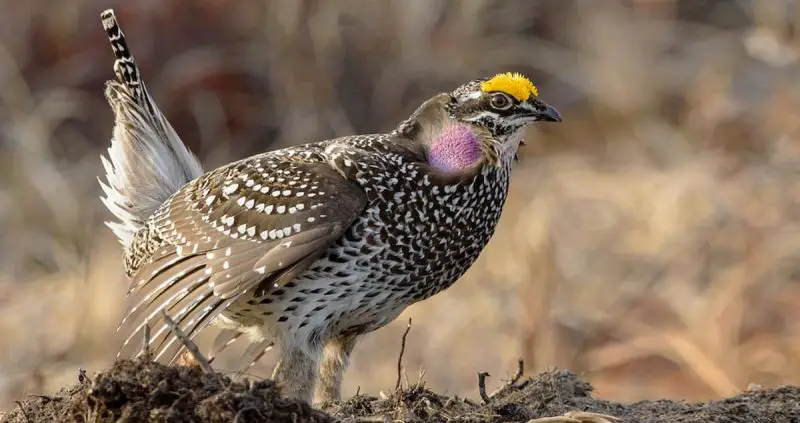
The Sharp-tailed Grouse is a medium-sized grouse species notable for its pointed tail feathers that give it its name. Adults measure about 15-18 inches in length with a wingspan of roughly 24-27 inches. Their plumage is mottled brown and white with intricate patterning that camouflages them well in grassland and shrub habitats. Males have a striking yellow patch on their necks and perform unique booming calls during courtship.
In Colorado, Sharp-tailed Grouse primarily occupy the northeastern plains and grasslands. They prefer open habitats with a mix of grasses, shrubs, and scattered trees. Their diet includes a combination of seeds, leaves, berries, and insects. These birds are ground nesters, building their nests hidden in tall grass or shrub cover to protect eggs and chicks from predators.
Behaviorally, males gather at communal leks where they perform elaborate displays involving foot-stomping, tail-fanning, and distinctive vocalizations to attract females. Outside of breeding season, they form small flocks and rely on their excellent camouflage to avoid predators such as hawks and foxes. Sharp-tailed Grouse are known for their ability to run swiftly through dense vegetation to escape threats.
A fun fact about Sharp-tailed Grouse is their remarkable “booming” courtship sound, produced by inflating air sacs in their necks. This sound can carry across large distances and is essential for attracting mates and establishing dominance among males during the breeding season.
Ruffed Grouse
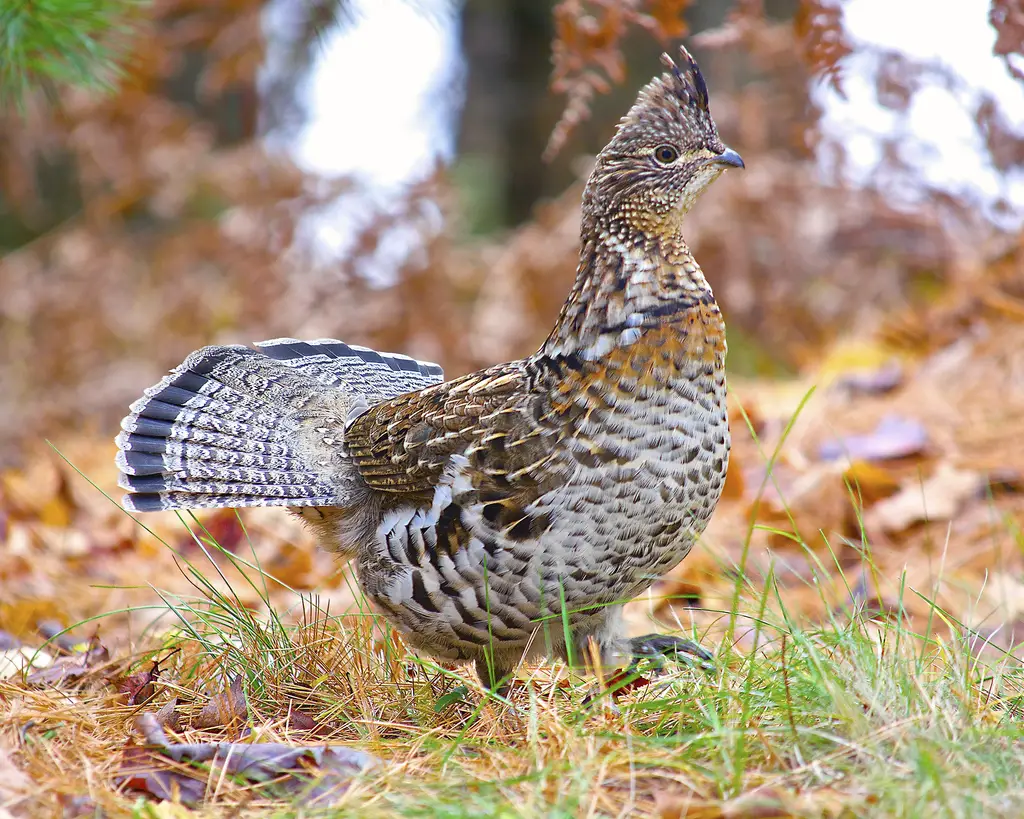
The Ruffed Grouse is a medium-sized forest bird recognized for its distinctive ruff of feathers around the neck and its fan-shaped tail with bold black bands. Adults typically measure 16-18 inches in length with a wingspan of about 24-26 inches. Their plumage varies from gray to reddish-brown, helping them blend seamlessly into forest floors covered in leaf litter and underbrush.
Though more common in northern states, Ruffed Grouse inhabit some forested areas of Colorado, especially in mixed deciduous and coniferous forests at mid to high elevations. They prefer habitats with dense understory for cover and nesting. Their diet consists mainly of buds, leaves, fruits, and insects, which varies seasonally. During winter, they feed heavily on tree buds and twigs.
Ruffed Grouse are known for their explosive flight when startled, producing a distinctive drumming sound made by rapid wingbeats that can be heard in spring. This drumming serves as a territorial signal to rivals and a mating call to females. They tend to be solitary except during mating season and are primarily ground dwellers.
A fun fact about the Ruffed Grouse is their name derives from the “ruff” of feathers around their neck, which males prominently display during courtship rituals. Their drumming display is unique among grouse and is often considered a hallmark sound of northern forests in spring.
FAQs about Types of Grouse in Colorado
What are the main types of grouse found in Colorado?
Colorado is home to four primary types of grouse: Greater Sage-Grouse, Dusky Grouse, Sharp-tailed Grouse, and Ruffed Grouse. Each species occupies different habitats ranging from sagebrush plains to mountainous forests.
Where can I typically find Greater Sage-Grouse in Colorado?
Greater Sage-Grouse are mostly found in the sagebrush steppe regions of eastern and southeastern Colorado. They rely on large expanses of sagebrush for food, shelter, and breeding.
How can I identify a Dusky Grouse?
Dusky Grouse have dark gray to brown plumage with a bluish-gray head and neck. Males show a bright yellow patch above the eyes during breeding season, making them distinctive among Colorado’s forest birds.
Do Sharp-tailed Grouse live in forested areas?
No, Sharp-tailed Grouse prefer open grasslands and shrublands, especially in northeastern Colorado. They need a mix of grasses and shrubs and are well adapted to prairie habitats.
Are Ruffed Grouse common in Colorado?
Ruffed Grouse are less common in Colorado compared to northern states but can be found in some forested areas with dense underbrush at mid to high elevations.
What is unique about the mating display of Greater Sage-Grouse?
Male Greater Sage-Grouse perform spectacular courtship displays by inflating large yellow air sacs on their chest and producing booming sounds. This display is one of the most remarkable bird mating rituals in North America.
Can I see these grouse year-round in Colorado?
Grouse can be seen year-round, but some species are more visible during the breeding season in spring when males perform their displays. Winter months may make spotting them harder due to snow and their secretive behavior.
What threats do Colorado grouse face?
Habitat loss and fragmentation, especially of sagebrush and forested areas, pose major threats. Conservation efforts focus on preserving large, contiguous habitats to support healthy grouse populations.

